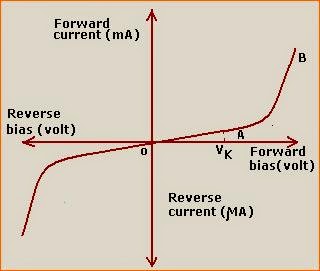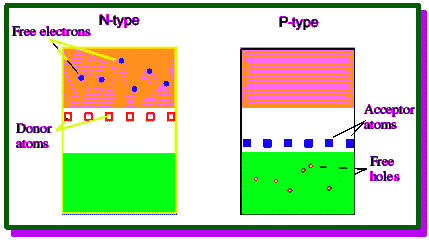1.The response of PN junction diode can be easily indicted with the help of characteristics called V-I characteristics.
2.It is the graph drawn between applied voltage across the diode and the current flowing through the diode.

2.It is the graph drawn between applied voltage across the diode and the current flowing through the diode.
CHARACTERISTICS OF A DIODE:
Under forward bias condition, the applied voltage is denoted by Vf and forward current flowing is denoted by If .The graph Vf vs If is called forward characteristics of a pn junction diode.
In forward bias condition as long as forward voltage is less than barrier potential ,there is no forward current.Once forward voltage greater than barrier potential , the forward current starts flowing,the current increases drastically.
Under reverse bias condition, the applied voltage is denoted by Vr and a small reverse satration current flowing is denoted by Io .The graph Vr vs Ir is called reverse characteristics of a pn junction diode.
 |
| pn diode characteristics |










